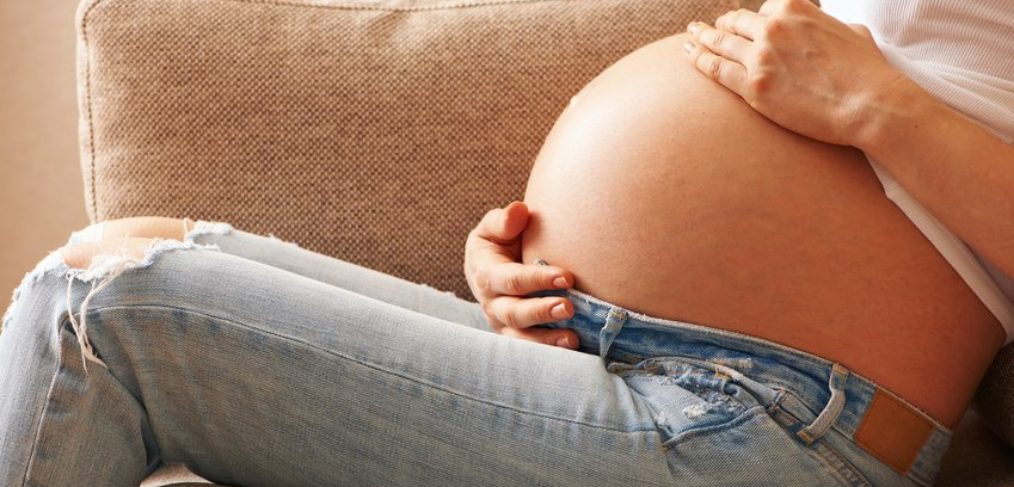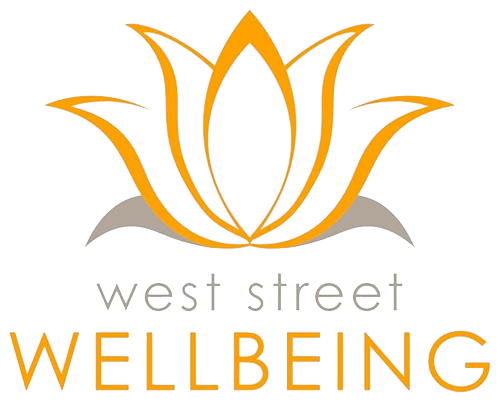
Acupuncture successfully treats chronic skin rash in pregnancy
Treating Rash in Pregnancy
A published Case Study by Dr Luke McPherson (CM), Resident Dr of Chinese Medicine at WSW
Publication details:
McPherson, L., & Cochrane S. (2013) Case report: A rash in pregnancy resolved by Chinese medicine. Australian Journal of Acupuncture and Chinese Medicine. 8 (22) 21-24
Title: A Rash in pregnancy resolved by Chinese medicine
Abstract:
Female 21 weeks pregnant of South Korean descent presents with itchy skin with red raised papules on much of her torso and limbs. Pathology tests show elevated ALT and AST. Diagnosis: rash due to liver and gallbladder damp heat. Treatment: acupuncture and Chinese herbal medicine. Results: after three sessions the rash and itch had disappeared, the liver function tests returned to normal ranges, and the pregnancy went to full term with the birth of a healthy baby girl.
Patient: Female, 27 years old of South Korean descent 21 weeks pregnant.
Introduction:
Pregnancy rash is a painful problem and can affect many facets of the patient’s and foetus’s health. The patient in this case sought medical advice from her GP, her obstetrician and a dermatologist before seeking treatment from traditional Chinese medicine. Pregnancy rash can be difficult to treat in TCM as we are limited as to what herbs we can use, and the herbs that are deemed safe for use in pregnancy are not always the most effective and are therefore not our first choice. For this reason TCM practitioners have to be skilful in their diagnosis and knowledgeable in prescribing Chinese herbal medicine; because incorrect diagnosis/prescription can have detrimental effects to the pregnant patient and her foetus.
Literature review
The literature available associated with pregnancy rash and traditional Chinese medicine was negligible in both textbooks and journal articles. I performed a search on the databases Cinahl, PubMed, Google Scholar, and Science Direct using the criteria: “Pregnancy rash and traditional Chinese medicine” and “Pregnancy rash and acupuncture”. I yielded no useable article to include in the review. I then expanded my search to “Pregnancy rash” and “Pregnancy itch”.
The search results were biomedical articles on pregnancy itch and rash; there were no articles within my search parameters that yielded information on the usage of traditional Chinese medicine for the treatment of pregnancy rash and itch. All the information in this review is on biomedicine classification of pregnancy itch.
(1) discusses the increased levels of oestrogen and progesterone are a physiological cause of skin rash and itch, however when the rash and itch is severe and prolonged it becomes pathological. The exact differentiation between the two is somewhat blurred in the article, only that the differentiation can be achieved by pathology tests (1). The rash associated with pregnancy are classified into categories: Inflammatory disorders such as psoriasis; infections such as candida; auto-immune disorders such as systemic lupus erythematosus (SLE), metabolic disorders such as acrodermatitis, and cutaneous tumours. None of the aforementioned categories fits the rash my patient is afflicted with.
(2) discuss the commonality of pruritic urticarial papules and plaques of pregnancy (PUPP), which is suggested to be a by-product of elevated oestrogen and progesterone levels in pregnancy. (3,4) concur that PUPP is caused by elevated hormones, but also that it could be caused by a metabolic disorder. As the case with (1) the research seeks to classify the types of pregnancy rash, and identify correct nomenclature; this does not add anything to treatment apart the effective use of cortisone cream.
The absence of research centred on the use of traditional Chinese medicine for the treatment of pregnancy rash shows there is a definite gap in the current literature that needs to be explored.
Chief complaint:
The patient presents with itchy skin with red raised papules on the posterior/anterior torso, arms (with a strong concentration around ulnar crease), legs both anterior and posterior, and face (around the mandible). The rash has been present for approximately three-four weeks before seeking TCM treatment. The rash was hot, raised and extremely itchy, there is no exudation and the heat intensifies itch. The patient had self-administered ice to areas of highest inflammation with some limited results. The itch was constant, but provided greatest discomfort at night as it prevented sleep.
Previous treatment:
Patient visited her General Practitioner (GP) who conducted a blood test. It was unremarkable with the exception of the liver function test and her neutrophil count.
ALT 37 (normal range: 8-30)
AST 46 (normal range: 6-40)
Neutrophil 8.7 (normal range: < 2.75)
The GP voiced his concerns to the patient about obstetric cholestasis (OC) due to the elevated ALT/AST readings. This can lead to spontaneous birth, and at 21 weeks this was a major concern that needed addressing (Chao & Sheffield, 2011).
Other signs and symptoms:
Very thirsty, particularly of a night; restless sleep, low energy, hard dry stool once every two days, frequent urination, bitter taste in the mouth. Appetite was unremarkable.
Pulse: Slippery, wiry in the liver position, tight in the spleen position
Tongue: Red sides and tip with a medium yellow coat and a centre line crack
Diagnosis:
Rash due to liver and gallbladder heat
Treatment principle:
Clear heat from liver and gallbladder and relieve itch
Acupuncture:
| Point | Technique | Reason | |
| LI 11: | Qu Chi
|
Reducing | Clear heat and relieve itch. This is a local point as the rash is in the ulnar crease |
| GB 34 | Yang Ling Quan
|
Reducing | Clear heat from liver and gallbladder |
| Liver 3 | Tai Chong | Lifting and thrusting until De Qi arrives
Medium |
Nourish liver yin and cool blood |
| St 44 | Nei Ting
|
Reducing | Clear heat |
| Bl 17 | Ge Shu | Medium | Clear blood heat |
| Ah Shi | Lifting and thrusting until De Qi arrives
Medium |
Needling around highest concentration of rash (Left clavicle, ulnar crease, gastrocnemius, and jugular notch). |
Herbs:
Herbal formula was prescribed using granules with a ratio of 1:10 compared to raw herbs.
| Herb | Dose per day | Action |
| Yin Chen Hao | 2.4g | Clear heat, dry damp, resolve rash |
| Yu Jin | 1.2g | Clear heat, cool blood, benefits the liver and gallbladder |
| Huang Qin | 0.8g | Clear heat, dry damp, harmonise fetus |
| Bai Shao | 1.2g | Nourish the blood, preserve the yin |
| Chai hu | 1g | Calm the wind, soothe the liver |
| Pu gong ying | 1.2g | Clears heat from the skin, clears the liver |
| Gan cao | 0.4 | Harmonise the herbs |
The patient was advised to mix 4.1g into a cup of hot water and stir well, allow steeping for 15 minutes and then stirring again before drinking. This is to be taken twice per day half-hour before meals.
Follow up treatment:
The patient returned the following week with a 90% reduction in itch and the rash had disappeared from the majority of her body; it only remained around the ulnar crease of the elbow, the clavicle on left hand side and the gastrocnemius bilateral inferior portion. The patient reported sleeping much better (around 7 hours per night), had more energy and an improved bowel movement of 1 per day.
I repeated the treatment principle for the next 2 sessions. The patient had no signs of rash on her body and there was no remaining itch. Her liver function tests were repeated and they were all within their normal ranges. The pregnancy went to full term and a healthy baby girl was born.
Discussion
This case is significant because of the successful outcome of a condition there is little literature on to guide with. There was no diagnosis in biomedicine to guide the treatment, so traditional Chinese medicine differential diagnosis was the only efficient means to explain the painful itchy rash experienced by the patient.
In developing a treatment strategy I reviewed the work of my colleagues, and the relevant literature that was available in journal articles, and books. The GP ruled out pruritic urticarial papules and plaques of pregnancy (PUPP) due to high ALT/AST, and lack of rash around umbilicus. Pemphigoid gestationis was also ruled out by both obstetrician and GP due to the absence of plaque. The literature reviewed confirmed the GP’s conclusions. The patient was referred to her paediatrician, and was subsequently referred on to a dermatologist. No diagnosis was given, and the patient was informed that they were uncertain of the origin and prognosis of the itch.
The GP was concerned about the patient developing obstetric cholestasis due to the elevated ALT/AST readings. This condition causes itch over the entire body but most prominently on the hands and feet, and is worse at night (5). As mentioned in (5), there is no rash associated with obstetric cholestasis, except reddening of the skin from the intense scratching. The obstetric cholestasis patient may also produce dark urine and stools.
Obstetric cholestasis was ruled out because the patient has a rash over a large proportion of her body, and she did not have the dark urine and stools, which was congruent with the diagnostic signs in (5). However, the concern was raised that the high ALT/AST could be associated with increased bile salts, which could cause premature labour or postpartum haemorrhage (6).
The use of herbal medicine and acupuncture provided fast relief of symptoms of intense itch and rash; and tangible results by reducing the chance of premature labour by lowering the ALT/AST levels. This in turn improved the health of the patient by improving quality and quantity of sleep, increasing energy levels, and improving bowel movements.
Conclusion:
The treatment employed using traditional Chinese medicine differential diagnosis successfully lowered the high ALT/AST, relieved the itch and dissipated the rash. The patient went to full-term of pregnancy and delivered a healthy baby. Whilst biomedicine is very skilled with sophisticated testing, it is important that practitioners of Chinese medicine still utilise our own diagnostic principles. As mentioned in the literature review there is limited study on the treatment of pregnancy itch with TCM; acupuncture and Chinese herbal medicine are areas that require rigorous investigation into its effectiveness in treating pregnancy itch.
Bibliography
- Kroumpouzos G, Cohen LM. Dermatoses of pregnancy. J Am Acad Dermatol. 2001 Jul;45(1):1-19; quiz -22. PubMed PMID: 11423829.
- Matz H, Orion E, Wolf R. Pruritic urticarial papules and plaques of pregnancy: polymorphic eruption of pregnancy (PUPPP). Clin Dermatol. 2006 Mar-Apr;24(2):105-8. PubMed PMID: 16487883.
- Brzoza Z, Kasperska-Zajac A, Oles E, Rogala B. Pruritic urticarial papules and plaques of pregnancy. J Midwifery Womens Health. 2007 Jan-Feb;52(1):44-8. PubMed PMID: 17207750.
- Barrenetxea G, Melchor, J., Barbazan, G., Aranguran, G., Rodrigues-Escondero, F.J. Pruritic urticarial papules and plaques of pregnancy. International Journal of obstetrics and gynecology. 1989;33:3.
- Welsh A. Hyperemesis, gastrointestinal and liver disorders in pregnancy. Current Obstetrics and Gynaecology. 2005;15(2):8.
- Maciocia G. Obstetrics & Gynecology in Chinese medicine. Edinborough: Chruchill Livingstone; 1989.
- Betts D. Acupuncture in pregnancy and childbirth. East Sussex, England: The Journal of Chinese Medicine; 2006.
- Cargill ME. Well women: healing the female body through traditional Chinese medicine. Westport, Connecticut USA.: Greenwood Publishing Group; 1998.
- Yu J. Obstetrics & gynecology in Chinese medicine. . Seattle: Eastland Press; 1998.


